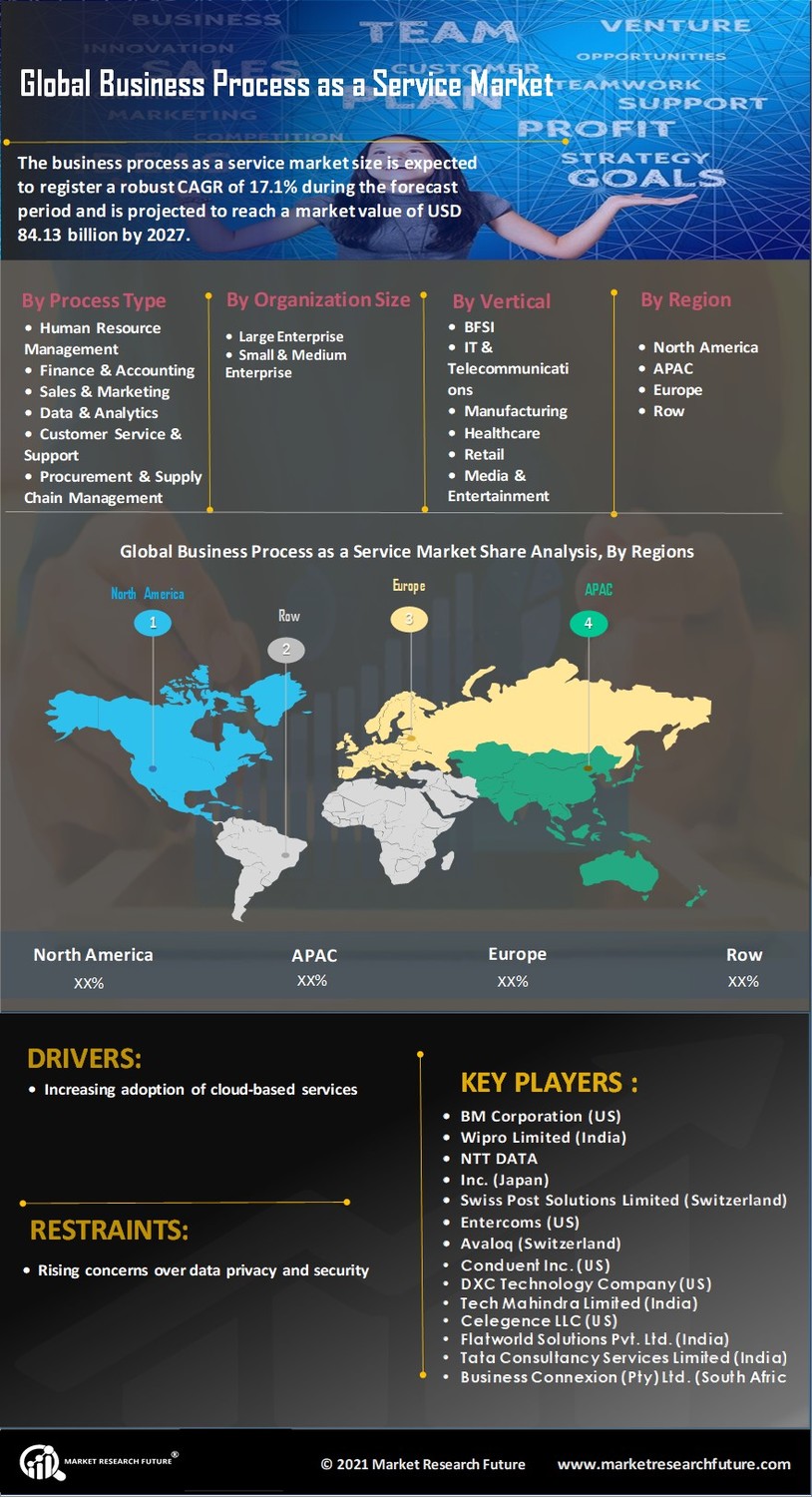Focus on Cost Efficiency
Cost efficiency remains a pivotal driver in the Global Business Process as a Service Market Industry. Organizations are increasingly pressured to minimize expenses while maximizing output. By outsourcing business processes to service providers, companies can reduce overhead costs associated with maintaining in-house operations. This shift not only allows for better allocation of resources but also enables firms to focus on core competencies. The financial implications are substantial, as the market is projected to expand to 254.4 USD Billion by 2035, indicating a strong preference for cost-effective solutions that Business Process as a Service Market offers.
Market Growth Projections
The Global Business Process as a Service Market Industry is poised for substantial growth, with projections indicating a rise from 32.4 USD Billion in 2024 to 254.4 USD Billion by 2035. This trajectory suggests a compound annual growth rate of 20.61% from 2025 to 2035. Such growth is driven by various factors, including the increasing demand for automation, cost efficiency, and the integration of advanced technologies. The market's expansion reflects a broader trend towards outsourcing business processes, as organizations seek to enhance operational efficiency and focus on core competencies.
Rising Demand for Automation
The Global Business Process as a Service Market Industry experiences a notable surge in demand for automation solutions. Organizations are increasingly adopting automated processes to enhance efficiency and reduce operational costs. For instance, businesses are leveraging robotic process automation to streamline repetitive tasks, which can lead to significant time savings. This trend is reflected in the projected market growth, with the industry expected to reach 32.4 USD Billion in 2024. As companies seek to optimize their workflows, the adoption of Business Process as a Service Market is likely to accelerate, contributing to a robust compound annual growth rate of 20.61% from 2025 to 2035.
Globalization of Business Operations
The globalization of business operations significantly influences the Global Business Process as a Service Market Industry. As companies expand their reach across borders, they require scalable and flexible solutions to manage diverse operations effectively. Business Process as a Service Market enables organizations to standardize processes while accommodating local variations, thus facilitating smoother international operations. This adaptability is crucial for companies aiming to thrive in competitive global markets. The increasing need for such solutions is reflected in the market's projected growth, as it is expected to reach 32.4 USD Billion in 2024, highlighting the importance of globalization in driving demand for Business Process as a Service Market.
Integration of Advanced Technologies
The integration of advanced technologies such as artificial intelligence and machine learning is transforming the Global Business Process as a Service Market Industry. These technologies facilitate enhanced data analysis, predictive analytics, and decision-making processes, thereby improving overall service delivery. Companies that adopt these innovations can expect to see improved customer experiences and operational efficiencies. As the industry evolves, the incorporation of such technologies is likely to drive further growth, aligning with the anticipated market expansion to 254.4 USD Billion by 2035. This trend underscores the importance of technological advancement in shaping the future of business processes.
Regulatory Compliance and Risk Management
Regulatory compliance and risk management are critical drivers in the Global Business Process as a Service Market Industry. Organizations face increasing scrutiny from regulatory bodies, necessitating robust compliance frameworks. Business Process as a Service Market providers offer solutions that help companies navigate complex regulatory landscapes while minimizing risks associated with non-compliance. This is particularly relevant in industries such as finance and healthcare, where regulatory requirements are stringent. As businesses prioritize compliance, the demand for Business Process as a Service Market is expected to grow, contributing to the market's anticipated expansion to 254.4 USD Billion by 2035.

















Leave a Comment